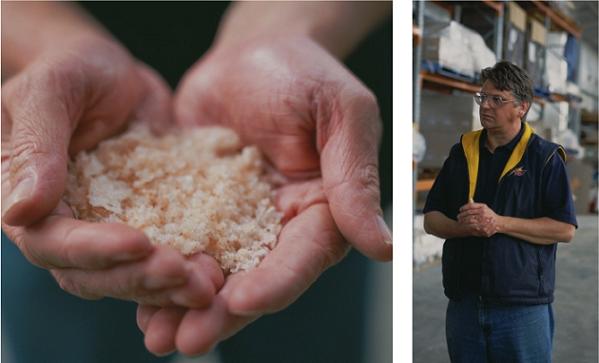
Conventional belief that salt comes from the ocean seems to make sense, but in reality the ocean is not saline enough to produce salt in the quantities we use. Cheap table salt is mass-produced using a process far removed from the romantic idea of giant salt pans drying slowly under a desert sun. Salt water is heated to 290°C, which removes eighty-two of the eighty-four naturally occurring minerals found in sea water. Then chemical additives (aluminium compounds) are mixed in with the salt to prevent caking. It is far from a natural process, and perhaps adds to the reputation that salt has attracted in recent years as a robber of health.
The drying of salt water under the hot sun does happen, however, and sometimes in the most unlikely places. Its Mediterranean climate and fertile soil have made Mildura on the New South Wales and Victorian border (and about an hour’s drive from the border of South Australia), a popular place to settle, and the agricultural centre has a permanent population of 65,000.
Alan Hutcheon of Murray River Gourmet Salt

In Mildura, an ancient underground aquifer is used to bring us Murray River salt, a salt distinguished by its unique colour: the minerals from the inland sea give the salt flakes a pink tinge.
The underground source of saline water in Mildura is naturally occurring and has existed for thousands of years. Mining this water for commercial purposes is helping to solve Australia’s considerable salinity problem. It is estimated that an area of earth the size of a football field is lost to creeping salinity in Australia every hour, making the earth impossible to farm, and eventually leading to creeping desert spaces across the continent.